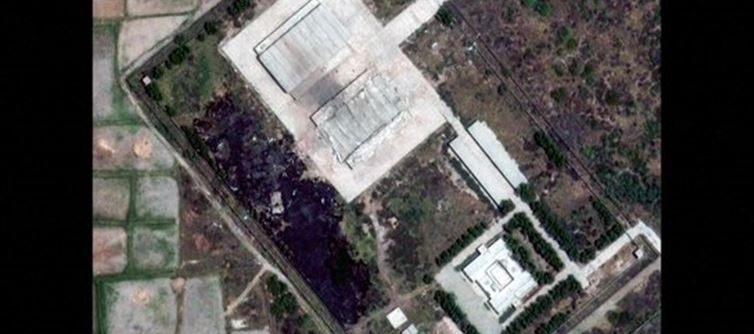
In a development that has triggered fresh tensions in the already volatile Indo-Pak relationship, exclusive satellite imagery accessed by NDTV reveals significant visual discrepancies at several key Pakistani airbases — purportedly following recent Indian military operations. The images, taken before and after the reported strikes, show what analysts claim are signs of possible damage or disruption at six major airbases: Sargodha, Nur Khan (Chaklala), Bholari, Jacobabad, Sukkur, and Rahim Yar Khan.
The satellite snapshots, released in a report that has quickly gone viral, appear to display burn marks, structural changes, and vehicular displacement, suggesting heightened activity or aftermath damage. While Indian defense experts have described the images as “compelling evidence” of precision targeting, Pakistani officials have categorically denied any such impact, branding the claims as “fabricated, misleading, and part of an orchestrated disinformation campaign.”
The Imagery Breakdown
Sargodha Airbase, home to one of Pakistan’s premier fighter squadrons, shows what NDTV analysts point to as darkened patches and disrupted layouts—possibly craters or fire damage. At Nur Khan Airbase (Chaklala) near Islamabad, alleged anomalies in runway patterns and aircraft positioning raise questions about recent operational shifts or emergency relocations. Bholari, a newer strategic airbase used frequently by Chinese and Pakistani joint operations, shows changes that some believe indicate material losses or high-alert mobilization. Jacobabad and Sukkur bases exhibit minor yet noticeable shifts in surface conditions, possibly indicating rapid aircraft movement or temporary abandonment of installations. Rahim Yar Khan, often considered a backup facility, reportedly displays damage to hangar structures—though independent verification remains elusive.
Reactions Pour In- India’s defense establishment has maintained a strategic silence, refusing to confirm or deny the authenticity of the operation, citing national security protocols. However, off-record sources suggest that the strikes were a “measured response to provocations and escalating cross-border threats.” In contrast, Pakistan’s military spokesperson issued a strongly worded rebuttal. “There have been no strikes on our soil, and the integrity of our defense infrastructure remains intact. These images are either doctored or misinterpreted.”
Analysts Divided
Security analysts and satellite imagery experts remain divided. While some argue the visual data aligns with typical post-strike signatures, others caution against drawing conclusions without geospatial verification and time-synced imaging. “Satellite imagery can be deceptive,” says Dr. Asif Khalid, a defense analyst based in Lahore. “Shadow patterns, natural wear, or even camouflage measures can distort interpretation.”
Meanwhile, social media has erupted with polarized commentary. While Indian users hailed it as a “technological triumph,” many Pakistani netizens questioned the credibility of NDTV’s sources, with hashtags like #FakeStrikeClaims and #SatelliteSpin trending across platforms.
Political Fallout
The controversy comes at a critical juncture, with both nations engaged in diplomatic posturing over border skirmishes and allegations of cross-border terrorism. Opposition leaders in both countries have seized the moment, demanding transparency and accountability.
In India, critics are pressing the government to release official footage or detailed assessments. In Pakistan, opposition parties are accusing the military of “downplaying potential national security breaches.”
What Comes Next?
With both governments sticking to their narratives and independent verification proving difficult amid rising censorship and nationalistic fervor, the truth — as often happens in South Asia — may lie obscured in the fog of strategic ambiguity.
As NDTV’s images continue to stir debate, one thing is clear: in the age of satellite surveillance and information warfare, perception can be as potent as payload.




 click and follow Indiaherald WhatsApp channel
click and follow Indiaherald WhatsApp channel